Freight Shipping between Vietnam and Belgium | Rates – Transit Times – Duties & Taxes
Do you need detailed information on shipping between Vietnam and Belgium? You’re attracted to the Vietnamese market, but how can you enter it most effectively? Online access to this kind of information is difficult. In order to facilitate travel between Vietnam and the French-speaking globe, FNM Vietnam has created a “destination guide“.
This article covers all aspect of the goods trade between Vietnam and Belgium. You can learn about the various modes of freight, the customs clearance of Vietnamese goods in Belgium, and the bilateral economic connections.
What is the best way to transport freight from Vietnam to Belgium?
Belgium is a very intriguing country for any investor or entrepreneur, even though it is a small nation in terms of size and population. The lifestyle and consumer habits of its people make it a lucrative market for any business.
The nation has a world-class port in Antwerp, which is also the second-largest port in Europe, after Rotterdam, and is quite dynamic in terms of shipping. As a result, these ports are the destination for the majority of goods imported into Belgium and the wider Europe. In contrast, Belgium, which benefits from its proximity to major European airports, including Paris, Frankfurt, Amsterdam and Luxembourg, has a less established air freight industry.
Through our network of agents around the world. We can provide you with incredibly affordable air and ocean freight services between Vietnam and Belgium. Our consultants are here to set up a specifically designed solution.
We will now determine if the mode of transportation is the best for your items.
Docshipper Note:
Need assistance with your shipment? Dont hesitate to contact us even for a simple question. Choose the option that suits you
Live chat with an expert Chat us on WhatsApp Fill the form
Ocean freight shipping between Vietnam and Belgium
Overview of maritime transport from Vietnam to Belgium
As mentioned in the introduction, most of the freight between Vietnam and Belgium is carried by sea. This is easily explained, as it is a cheap way to transport large volumes of goods. The main disadvantage of this method is the long time needed to transfer your goods, usually more than a month.
Shipping companies operating between Vietnam and Belgium
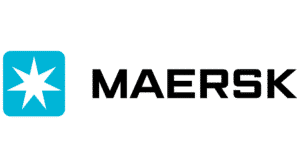
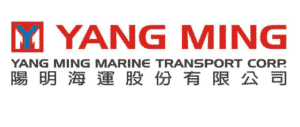

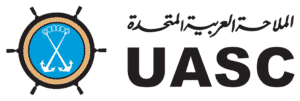
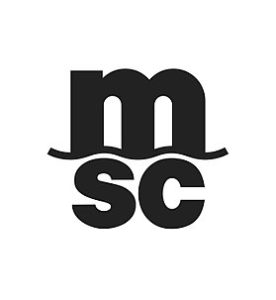

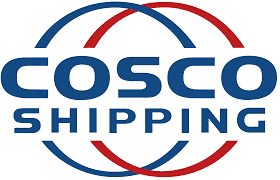
The ports of belgium
Port of Antwerp
The Port of Antwerp is one of the largest ports in the world and is located in the heart of Europe. It is an important transport hub, connecting Europe to the rest of the world by sea. The port is known for its modern infrastructure, efficient cargo handling, and excellent customer service. It is also known for its environmental sustainability and initiatives, such as its commitment to reduce carbon emissions. The port has a wide range of facilities, including container handling, break bulk, roll-on roll-off, and inland navigation. It has also become a major player in the logistics and supply chain industry, with many logistics companies using the port as a base. The Port of Antwerp is one of the most important ports in Europe, and its continued growth and success is a testament to its commitment to providing the best possible service to its customers.
Port of Bruges
The Port of Bruges is a major European port located on the North Sea coast of Belgium. It is the second-largest container port in the country and one of the busiest ports in Europe. The port has an extensive network of connections to major cities and countries, making it a popular choice for both international and domestic trade. The port has a wide range of facilities, including cargo handling, warehousing, and logistics. It also has modern infrastructure, such as its well-developed port security system and advanced IT infrastructure.
DocShipper Tip :
DocShipper can take care of all the administrative and customs procedures for international transport. Please complete this form, and one of our experts will contact you within 24 hours.
What is the best solution between LCL and FCL from Vietnam to Belgium?
LCL: Less than Container Load
Less than Container Load (LCL) shipping is a shipping method that allows customers to consolidate their smaller shipments into one container. This is a cost-effective alternative to full-container shipping, as customers can share the cost of a large container with other customers, allowing them to benefit from the lower freight rates. When booking an LCL shipment, customers are responsible for loading their goods into the shared container and providing the necessary paperwork for the container to be shipped. LCL shipping is a great option for small businesses with smaller orders that do not require a full container. It is also quicker than full container shipping, as the container does not need to be unloaded and reloaded at each port.
FCL: Full Container Load
Full Container Load (FCL) shipping is a type of freight transportation that involves customers placing their goods in an entire container, as opposed to Less than Container Load (LCL) shipping, where customers share a container with other customers. FCL is more expensive than LCL, as customers are responsible for booking and paying for the entire container. However, it offers greater security, as customers’ goods are not mixed with those of other customers, and can be shipped more quickly, since the container does not need to be unloaded and reloaded at each port. FCL shipments also allow for easier tracking of goods due to the fact that customers are provided with a specific container number.
Under what conditions is FCL recommended?
When your merchandise has a brute volume greater than 15 m3, the FCL is advised.
LCL or FCL, what should I choose?
We created this table to help you decide which of these two approaches is the most advantageous.
| Type of shipment | Advantages | Disadvantages |
|---|---|---|
| LCL (Less Container Load) |
|
|
| FCL (Full Container Load) |
|
|
How long does it take a ship to travel from Vietnam to Belgium?
You will find in this table the travel time from port to port, between Belgium and Vietnam.
| City of origin | Destination | Average delivery time (in days) |
|---|---|---|
| Hai Phong | Antwerp / Bruges | 36 |
| Quy Nhon | Antwerp / Bruges | 34 |
| Ho Chi Minh City | Antwerp / Bruges | 34 |
*These times are only estimates, please contact our consultants for personalized information
How much does it cost to ship freight between Vietnam and Belgium?
The price of sea freight can vary greatly depending on several factors such as the volume and type of goods being shipped, the time of year, and market demand. Contact us today, and we will send you an accurate and up-to-date estimation of the shipping cost.
Special sea freight services
Refrigerated container from Vietnam to Belgium
Some products require a consistently monitored temperature. The refrigerated containers allow for continuous environmental control so that they can be transported. Thanks to this approach, the majority of chemical products and some food products are transported throughout the world. Please contact us if you have any questions because DocShipper offers this service from any port.
Roro / Bulk / Oversized freight from Vietnam to Belgium
“RORO” stands for “Roll-On/Roll-Off” which is a method of shipping cargo where items are driven or rolled on and off the ship. This type of shipping is often used for vehicles and large pieces of equipment. The ports of Bruges and Antwerp are heavily used for the import and export of vehicles to all member nations of the European Union.
“Bulk” freight refers to unpackaged goods that are shipped in large quantities, such as grains, minerals, or liquids. These goods are typically loaded directly into the ship’s hold without any packaging or containers.
“Oversized” freight refers to items that are larger than normal shipping containers and cannot be transported using standard shipping methods. This type of freight requires special handling and transport arrangements, such as using flatbed trucks or oversized cargo ships.
All three types of freight, RORO, bulk, and oversized, require special handling and transportation arrangements and typically cost more to ship than standard cargo.
The choice between LCL and FCL will depend on the volume of goods being shipped, the cost considerations, and the urgency of the shipment. LCL is often more suitable for smaller shipments, while FCL is preferred for larger, more substantial shipments.
Special sea freight between the US and Europe
- Refrigerated or Temperature-Controlled
This service is designed for transporting perishable goods and sensitive products that require specific temperature conditions. It ensures that items like fresh produce, pharmaceuticals, and certain chemicals maintain their quality and integrity during transit.
- Roll-on/Roll-off (RoRo)
RoRo vessels are specialized ships designed to carry wheeled cargo, such as automobiles, trucks, buses, and construction equipment. This method is efficient and secure, allowing vehicles to be driven directly onto the ship for transportation.
- Breakbulk
Breakbulk shipping is ideal for goods that are too large, heavy, or irregularly shaped to fit into standard containers. It involves loading individual pieces of cargo directly onto the ship’s deck, and it caters to items like machinery, industrial equipment, and oversized components.
- Project Cargo
Project cargo refers to transporting complex and large-scale industrial equipment or machinery for specific projects. This service involves careful planning, engineering, and coordination to handle and ship these specialized cargoes.
How much does it cost to ship between the US and Europe
Shipping between the US and Europe can be very expensive. It’s very important for you to know the weight and volume of your products, since it’s usually based on that.
For example, to ship a 20ft container (FCL) from the Port of Los Angeles to the Port of Rotterdam, the price varies between $2100 and $3250 USD.
For a 40ft container (FCL) the price is between $2900 and $4000 USD.
However, maritime freight rates might change depending on a number of variables, including fuel costs, consumer demand, and seasonal variations. Therefore, it is advised to get in touch with many service providers to compare prices and bargain for the best deal for your particular shipping requirements, don’t hesitate to chat with an expert or fill out our form for a free shipping quote.
DocShipper Advice :
Are you planning to ship goods from Vietnam or Belgium by sea? Whether it’s a groupage shipment or a full container, DocShipper takes care of all the procedures with the various players in the logistics chain.
A single point of contact, dedicated service, peace of mind, expertise… DocShipper makes importing and exporting more pleasant.
Contact us to receive a free estimate in less than 24 hours.
You have a question ? Call our consultants for free.
Air freight between Belgium and Vietnam
Conventional air freight and express air freight are two common methods of shipping goods by air.
Conventional air freight, also known as air cargo, is a traditional method of shipping goods by air. This type of air freight involves transporting goods on regularly scheduled flights and typically takes several days for delivery. Conventional air freight is often used for shipping larger items or for shipping items that do not require immediate delivery.
Express air freight, on the other hand, is a faster and more convenient method of shipping goods by air. This type of air freight uses dedicated air cargo planes and specialized courier services to transport goods, and delivery times are usually measured in hours or a few days. Express air freight is often used for shipping items that require immediate delivery, such as emergency medical supplies or high-value goods.
Both conventional and express air freight have their advantages and disadvantages, and the choice between them often depends on the specific shipping requirements, such as delivery time, cost, and item size.
| Type of freight | Benefits | Drawbacks |
|---|---|---|
| Conventional Air Freight |
|
|
| Air freight express |
|
|
What should I choose between conventional and express air freight?
The choice between conventional and express air freight will also depend on the weight of your goods.
- Conventional air freight: If your goods are too heavy for express air freight or if you are shipping large volumes of goods, conventional air freight may be the better option. Conventional air freight allows for the shipment of heavier and larger items, as it uses regularly scheduled flights and cargo planes.
- Express air freight: If your goods are lightweight and of a smaller size, express air freight may be the better choice. Express air freight is designed to transport smaller, lighter items and typically uses dedicated air cargo planes and specialized courier services.
It’s important to note that both conventional and express air freight have weight restrictions, and you should check with the shipping company to determine the maximum weight that can be shipped using each method. The cost of shipping will also depend on the weight of your goods, so it’s important to get accurate weight estimates to help determine the most cost-effective shipping method.
What is the difference between gross weight and volumetric weight of my goods?
These two methods are the volumized weight and the actual weight of your merchandise. Once the two calculations are complete, you must save the highest value, which will serve as the basis for your bill.
The two illustrations below show how to perform these calculations:
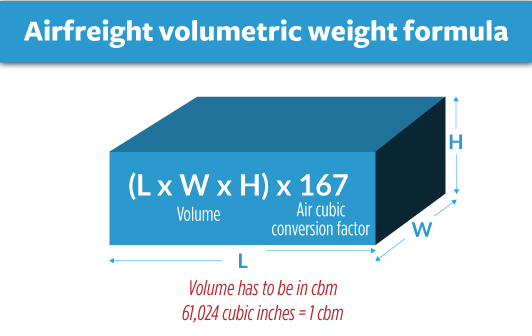
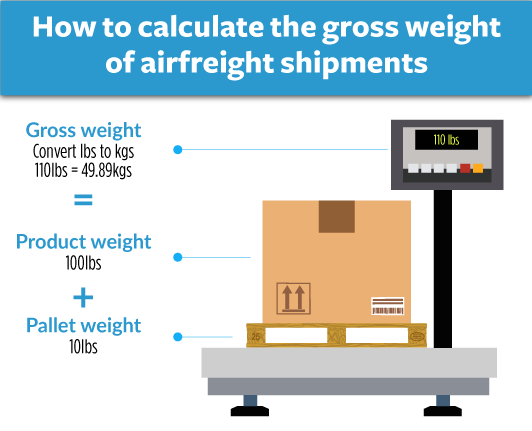
DocShipper Tip:
Air freight might be the best solution for you if:
- You are in a hurry or have a strict deadline requirement, as air freight offers the fastest transit times.
- Your cargo is less than 2 CBM (Cubic Meter), making it more suitable for smaller shipments.
- Your shipment needs to reach a destination that is not easily accessible by sea or rail, allowing you to tap into the extensive network of global airports.
How long does the air freight from Vietnam to Belgium take?
Your goods will arrive in Belgium from Vietnam after a 20-hour door-to-door flight.
How much does it cost to send a package from Vietnam to Belgium?
The cost of sending a package from Vietnam to Belgium will depend on several factors, including:
- Package size and weight: The size and weight of the package will directly impact the shipping cost, as heavier and larger packages will cost more to ship.
- Shipping method: Express air freight is typically more expensive than conventional air freight, due to the faster delivery times and specialized services offered.
- Destination: The cost of shipping to different cities within Belgium may vary, so it’s important to consider the final destination of your package.
- Shipping company: Different shipping companies may have different pricing structures and fees, so it’s important to compare prices and services before selecting a company.
- Value of the package: If you are shipping valuable items, you may need to purchase additional insurance coverage, which will increase the overall cost of shipping.
It’s best to get a quote from a shipping company or freight forwarder to get an accurate estimate for the cost of shipping your specific package from Vietnam to Belgium. Keep in mind that prices can change frequently, so it’s a good idea to get an updated quote closer to the time of shipping.
Express, the ideal solution for small parcels
Express shipping is often considered an ideal solution for small parcels as it offers fast and convenient delivery for smaller items, that weighs less than 20 kg and is less than 0.5 m3. Some benefits of express shipping for small parcels include:
- Speed: Express shipping is known for its fast delivery times, often measured in hours or a few days, which is ideal for shipping small parcels that need to arrive at their destination quickly.
- Convenience: Express shipping offers a more convenient shipping experience, with door-to-door delivery and real-time tracking, which can help you keep track of your parcel’s location.
- Reliability: Express shipping companies often have a well-established network and infrastructure, which can help ensure that your parcel is delivered on time and in good condition.
- Flexibility: Express shipping companies offer a variety of delivery options, including same-day delivery, next-day delivery, and two-day delivery, which allows you to choose the delivery option that best suits your needs.
How long does it take a package to travel from Vietnam to Belgium?
From Vietnam to Belgium, your package will travel by express freight in three days or less. This quickness can be attributed to the fact that delivery services have an internal department for customs clearance.
How much does it cost to send an express parcel from Vietnam to Belgium?
*Volumetric and actual weights are not estimated for express freight. The base ratio in place is 200 kg to 1 m3.
We have decided to process each request for a quote individually, much like how we handle other types of payment, so we are unable to send you average costs. Due to the volume we offer to our business partners, we are able to negotiate pricing that are incredibly

Door-to-door services between Vietnam and Belgium
Why are door-to-door services necessary?
Door-to-door services are necessary because they provide a number of benefits that cannot be matched by other shipping methods. These services offer a level of convenience, time-saving, peace of mind, and increased efficiency that make them essential for businesses and individuals alike. Furthermore, customs clearance is a crucial step in the transfer of your goods, but it’s very risky to handle it alone if you haven’t done it before. You can appoint FNM Vietnam to act as your customs representative. Because of our experience working with Belgian and Vietnamese customs, we can ensure a smooth transfer of your goods. Contact us today, and receive a free estimate in less than 24h.
DoShipper tip :
DocShipper offers assistance with international transportation. Whether the shipment is carried out by Sea freight or Air freight. Contact us to receive a free shipping quote in less than 24h.

Customs clearance of Vietnamese products in Belgium
How much will it cost to clear my Vietnamese products through customs?
It is a good idea to ascertain the precise cost of the transfer prior to purchasing your things. You must be aware of your goods’ HS code in order to do this. Like other WTO members, Belgium employs the Harmonized Commodity Description and Coding System. This implies that regardless of the nation, the things you convey are designated the same way. An HS code, an association of six members, is used to identify the products.
Calculate the applicable customs duties with the HS code
The following illustration allows you to understand the information contained in an HS code:
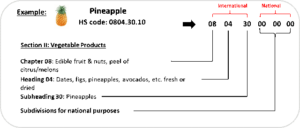
To determine the HS codes for your products, you can search for them by chapter through the Commission Implementing Regulation (EU) 2018/1602 of October 11, 2018. For example, in the case of pineapple, you will find in Chapter 8 “Edible fruit; Peel of citrus fruits and melons” the following code:
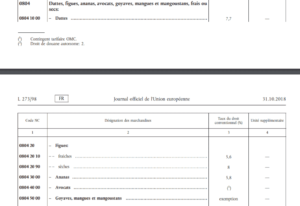
You will also notice that the applicable customs duty is specified. It is 5.8% of the value of your shipment.
Also, the FindHSCodes website allows you to search for the HS code of your goods using keywords or pictures.
You can also find out the customs duties applicable to your goods in the EU (and therefore in Belgium) thanks to the TARIC consultation system, available on the EU website. In the search bar “Product code” enter the HS code of the goods, then choose Viet Nam as the country of origin. Still with the pineapple example, you will get this result:
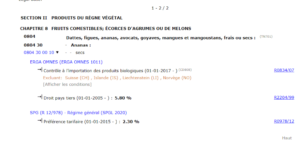
As stated in the implementing regulation, the customs duty you will have to pay is 5.8%. But thanks to the Generalized System of Preferences (GSP), a reduction of 3.5% on the customs duty is applied, which brings the customs duty you will have to pay to 2.30%. We will explain below what the GSP is.
VAT in Belgium
In Belgium, VAT (Value Added Tax) is a consumption tax that is levied on the sale of goods and services. VAT is generally included in the selling price of a good or service and is payable by the end consumer.
The standard rate of VAT in Belgium is 21%, but there are also reduced rates of 6% and 12% for certain products and services, such as basic foodstuffs, books, medicines, health care services, etc.
Excise duties in Belgium
Excise duties are taxes that tax the consumption of certain goods. The goods taxed are :
- Tobacco
- Alcoholic beverages
- Coffee and sweetened non-alcoholic drinks
For cigarettes and tobacco products, these excise duties vary between 31.5% and 40.04% of the retail price.
For sweetened non-alcoholic beverages, they vary between €6.81 and €71.54 per hectoliter.
For alcoholic beverages, download the appendices for more specific information.
For coffee, contact by email accijnsprocedures.douane@minfin.fed.be . They will give you more information.
How to get an exemption from customs duties?
A series of agreements have been made in the European Union to allow importers to clear their goods at zero or reduced rates. Vietnam is concerned by these measures through the Generalized Tariff Preference Scheme (GSP).
To obtain an exemption from customs duties for goods being imported from Vietnam to Belgium or vice versa, you will need to provide the relevant authorities with the necessary documentation and information. The exact requirements for obtaining a customs duty exemption will vary depending on the specific goods and the regulations of each country.
Here are some general steps that may be involved in obtaining a customs duty exemption:
- Determine eligibility: Check to see if your goods are eligible for a customs duty exemption based on the regulations of each country. This may involve researching the specific categories of goods that are exempt, as well as any specific requirements that must be met.
- Gather documentation: You will need to gather any relevant documentation that proves that your goods are eligible for a customs duty exemption. This may include certificates of origin, invoices, bills of lading, and any other relevant documents.
- Submit a declaration: Submit a declaration to the relevant authorities that details the goods in question and why they are eligible for a customs duty exemption. This declaration should be submitted in a timely manner, usually before the goods arrive at the port of entry.
- Pay any applicable fees: Some exemptions may require the payment of fees, such as processing fees or administrative fees.
- Wait for approval: After submitting your declaration and any required fees, you will need to wait for the relevant authorities to review your request and make a decision. If your request is approved, you will be able to proceed with importing your goods without having to pay customs duties.
It is important to note that the process of obtaining a customs duty exemption can be complex and time-consuming, and it is recommended to seek the assistance of a licensed customs broker or a tax professional to ensure compliance with all regulations and requirements.
The Generalized System of Preferences (GSP)
The Generalized System of Preferences (GSP) is a trade program established by the World Trade Organization (WTO) that provides preferential treatment to certain developing countries in their exports to developed countries. The GSP program is designed to promote economic growth and development in these countries by reducing the barriers to trade, such as customs duties and taxes, that they face when exporting to developed countries.
The benefits of the GSP program can include increased market access, reduced costs for exports, and improved competitiveness for businesses in developing countries. As a result, the import of products and materials “made in Vietnam” is subject to zero or reduced customs duties. The certificate of origin of your goods, proving that they have been manufactured in Vietnam, is necessary to take advantage of this benefit.
The general regime
The general regime refers to the standard treatment of goods and imports in international trade. It is the default system of customs duties, taxes, and regulations that applies to most goods that are imported into a country or exported from a country. The general regime typically includes the application of tariffs, customs duties, value-added taxes (VAT), and other taxes and fees that are imposed by the importing country.
Sensitive products
Sensitive products are goods that are subject to special treatment or restrictions in international trade. This can include products that are subject to trade barriers, such as tariffs or quotas, or products that are subject to regulations or restrictions due to health, safety, environmental, or other concerns.
Examples of sensitive products can include:
- Agricultural products: Some agricultural products, such as dairy, poultry, and eggs, are subject to trade barriers due to concerns about the impact on domestic producers.
- Chemical products: Certain chemical products may be subject to restrictions or regulations due to environmental or safety concerns.
- Medical products: Some medical products, such as prescription drugs and medical devices, are subject to regulations and restrictions to ensure the safety and efficacy of the products.
- Cultural products: Cultural products, such as works of art and antiques, may be subject to restrictions or regulations to protect cultural heritage.
It is important for businesses to understand the trade barriers and regulations that apply to sensitive products, as failure to comply with these regulations can result in fines, penalties, and other consequences.
Suspension or tariff quota
If the goods you wish to import are unavailable (suspension) or in insufficient quantity (quotas) in Belgium and the EU, they can benefit from reduced or exempted customs duties. Such products are updated every six months. You can view the latest suspension and quota lists, dated July 1, 2018.
Does FNM Vietnam charge for customs representation?
No, our customs brokerage services are not charged. Only the customs duties that you have to pay in Belgium will be paid. To prove our transparency, all the customs documents inherent to the passage in customs of your goods will be transmitted to you.
How does customs clearance work in Belgium?
Arrival and clearance of my goods, step by step
Here are the different steps you will have to follow, in order to clear your import from Vietnam:
- Before your goods enter the Customs Territory of the Union (TDU), you must submit an entry summary declaration to your customs office in Belgium
- Once the goods have arrived, they will be taken to a customs holding area for the duration of the procedure. You will then have to complete the entry summary declaration with the Single Administrative Document (SAD) and all other required documents
- To follow the examination of your goods, you will have to pay the inherent customs duties
- Finally, the goods will be released and can be transported to your address
Customs Procedures and Contacts
Contact Vietnamese customs
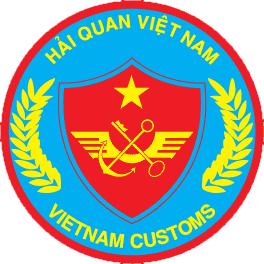
Official name: General Department of Vietnamese Customs
Website: Vietnamese Customs
Contact belgian customs

Official name: General Administration of Customs and Excise
Website: Belgian Customs
What are the necessary licenses to import Vietnamese products?
In order to enter the Belgian territory, certain goods must be accompanied by import licenses issued by the competent Belgian authorities. These products are :
- Weapons and ammunition
- Equipment for military use or for the maintenance of order and all related technologies
- CITES animal and plant species
- Cultural goods
What are the necessary documents for freight and customs clearance of my goods?
Bill of lading (Airway bill)
This document is essential for any international transfer. It is the waybill, but also the passport of your cargo. It allows you to prove that the transport of your goods is done according to the rules, because it is issued when the carrier is paid. The Letter of Credit will be issued after the Bill of Lading. The Bill of Lading is the bill of lading in the case of an ocean transfer, while the Airway bill is the bill of lading for an air shipment.
The following illustration details the information on the bill of lading:
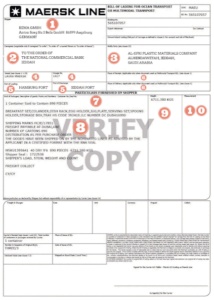
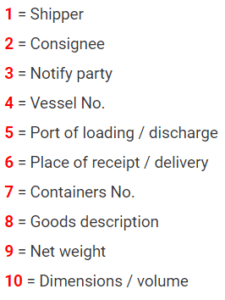
The original invoice
The Belgian customs will use the original invoice to verify that the goods are in accordance with your declaration.
The packing list
A packing list is a document that provides detailed information about the contents of a shipment of goods. The purpose of a packing list is to help customs authorities and other trade organizations understand the nature and quantity of the goods being imported or exported, and to ensure that the shipment complies with applicable trade regulations.
Certificate of Origin
Along with the bill of lading, the certificate of origin is essential for the clearance of your goods through customs. It is a proof that the products you are importing were manufactured in Vietnam. The exporter must have signed this document, which will have been issued by a Vietnamese government agency. It is very important that you provide this document to benefit from the GSP customs regime.
Here is a CO for Chinese products:
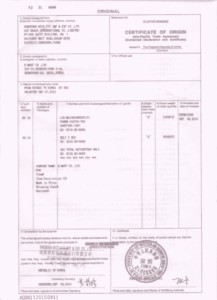
Which products are prohibited or restricted in Belgium?
For importation
- Counterfeit goods
- Items of a pornographic nature
- Hunting trophies, animal parts such as ivory, shark fins and animal products derived from animals and not intended for human consumption
- Narcotic products
- Asbestos or products containing it
For export
- Counterfeit products
- Asbestos or products containing it
- Certain cultural goods
Free trade agreements between the EU and Vietnam
The European Union (EU) and Vietnam have concluded a free trade agreement (FTA) called the EU-Vietnam Free Trade Agreement (EVFTA). The EVFTA was signed in June 2019 and entered into force on August 1, 2020. The EVFTA is designed to increase trade and investment between the EU and Vietnam by eliminating tariffs on a wide range of goods, services and investments.
The EVFTA includes provisions on trade in goods, services, investment, intellectual property rights, sustainable development, and legal and institutional issues. The agreement provides for the elimination of duties on many goods and the removal of trade barriers in services and investment.
Some of the main benefits of the EVFTA for European and Vietnamese businesses include:
- Increased market access: EVFTA provides for the elimination of tariffs on a wide range of goods, making it easier for businesses to trade with each other.
- Improved business environment: The EVFTA includes provisions on legal and institutional issues that aim to improve the business environment in the EU and Vietnam.
- Enhanced protection of intellectual property rights: The EVFTA includes provisions to enhance the protection of intellectual property rights, including copyrights, trademarks, and patents.
- Increased trade in services: The EVFTA includes provisions to increase trade in services, including telecommunications, financial services, and e-commerce.
The EVFTA is expected to have a significant positive impact on trade and investment between the EU and Vietnam.
Trade relations between Belgium and Vietnam
Belgium and Vietnam have a long-standing trade relationship, which has been growing in recent years. Belgium is a key trading partner of Vietnam in Europe, and Vietnam is one of the fastest-growing economies in Asia. The two countries have a strong economic relationship and are working to further expand their trade and investment ties. According to data from the Belgian Federal Public Service for Economy, the total trade volume between Belgium and Vietnam in 2020 was approximately 2.6 billion euros. Belgium exported 1.1 billion euros worth of goods to Vietnam, while importing 1.5 billion euros worth of goods from Vietnam.
Belgium imports mostly textile, leather and rubber shoes, leather chests and boxes, coffee, electrical conductors as well as shellfish from Vietnam. For its part, Vietnam mainly imports diamonds, packaged medicines, animal and human blood, malt, raw lead, non-woven textiles, raw wood, strong alcohols and ethylene polymers from Belgium.
Overall, trade relations between Belgium and Vietnam are expected to continue to grow in the coming years as both countries seek to expand their economic cooperation and take advantage of the opportunities offered by the EU-Vietnam Free Trade Agreement (EVFTA).
DocShipper Tip :
We provide total supply chain coverage with our 3PL service . We handle worldwide logistics, quality assurance, and compliance. Get in touch with us for further details!
Additional logistics services
Discover DocShipper's holistic approach to supply chain management, covering not just shipping and customs, but a full suite of additional logistics services tailored to streamline your global operations effectively.
Warehousing and storage
Securing a reliable warehouse in a foreign land could be a mountain to climb. Your goods, especially temperature-sensitive ones, need perfect conditions to stay market-ready. Imagine the peace of mind that a well-managed, temperature-controlled storage would bring! Your quest for such reliable warehousing ends here. More info on our dedicated page: Warehousing.
Packaging and repackaging
Protecting your products for the journey from China to Thailand requires expert packing and repackaging. Looking for items that defy the odds? Our network of trustworthy agents can handle everything from electronics to fragile ceramics. They ensure safe transport, perfect for businesses shipping diverse goods. Want to dive deeper? Find more at our dedicated page: Freight Packaging
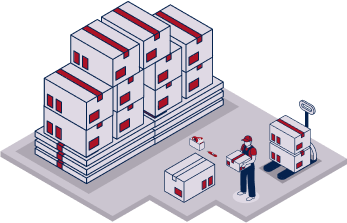
Cargo insurance
Cargo insurance acts as your safety net during your shipping journey. Ever considered a scenario where your shipment gets damaged by incidents other than fire? This is where cargo insurance comes into play, covering physical losses or damages from external causes. Think of a heavy storm tossing your ocean freight; cargo insurance has your back! Our customized coverage mitigates such risks. Need more insights? Visit our dedicated page: Cargo Insurance.
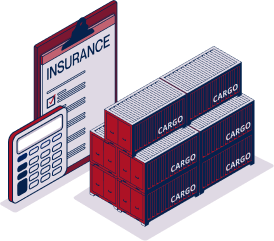
Supplier Management (Sourcing)
Looking to manufacture in Asia or East Europe? The supplier management service from DocShipper seamlessly handles it all - right from finding reliable suppliers to overseeing the entire procurement process. Forget language limitations or complex sourcing steps - DocShipper guides you through it all. For instance, if you strive to create a new toy line in China, we connect you with the best manufacturers and handle all purchasing details. More info on our dedicated page: Sourcing services
Personal effects shipping
Moving special items from China to Thailand? Your precious or oversized belongings deserve safe and efficient shipping. That's where we come in, with expertise in handling fragile and bulky cargo with utmost care. Consider the time we secured a customer's antique Chinese vase; it arrived in Bangkok unscathed! Craving more insights? More info on our dedicated page: Shipping Personal Belongings.
Quality Control
Ensuring the excellence of your products is our priority. Our Quality Control service eliminates your worries over manufacturing errors in your China-to-Thailand shipping. Imagine unboxing your Thai order only to find unsuitable items - a nightmare avoided with our pre-shipment inspection. Don't gamble with your business reputation; let us protect it. More info on our dedicated page: Quality Inspection
Product compliance services
Ensuring your merchandise arrives safely is essential, but have you considered if it meets local compliance standards? Our Product Compliance Services handle this crucial aspect, conducting rigorous laboratory tests for certification and verifying that your goods abide by the destination's regulations. Suppose true peace of mind in international shipping means no surprises at customs. In that case, our specialized expertise might be invaluable to you. More info on our dedicated page: Product compliance services
FAQ | Freight from Vietnam to Belgium: the complete guide
The estimated cost of sending goods from Vietnam to Belgium depends on several factors, such as the quantity of goods, the mode of transportation chosen, the type of products, etc. Therefore, it is important to request a quote from shipping companies to get an accurate estimate.
The shipping process generally includes the following steps: preparation of the goods, packaging, documentation, loading, transportation, customs clearance, and delivery to destination.
The average time to deliver goods from Vietnam to Belgium depends on the mode of transport chosen. Sea transport is usually the cheapest, but it can take 10 to 20 days. Air transport is faster, but more expensive, with a delivery time of 2 to 7 days.
To ensure that the goods arrive at their destination in good condition, it is important to pack them well and to use adequate packaging to protect the products during transport. It is also important to check the conditions of transport and make sure that the carrier has a good reputation for caring for the goods.